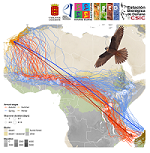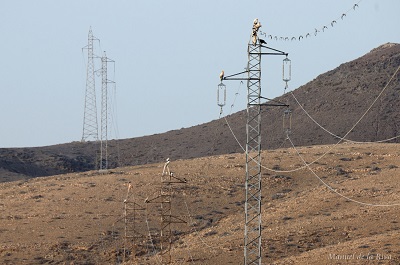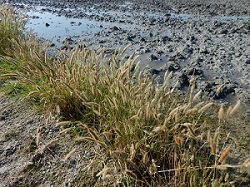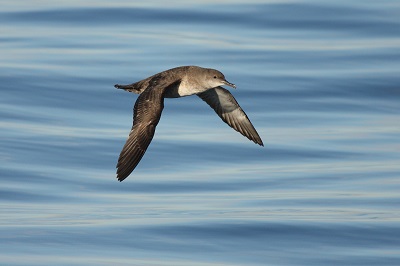
Welcome
Welcome to the official website of the Doñana Biological Station (EBD-CSIC)...

The Doñana Biological Station: EBD-CSIC
The Doñana Biological Station is a public Research Institute belonging to the Spanish Council for Scientific Research CSIC in the area of Natural Resources...

Mission
Our fundamental mission is to carry out multidisciplinary research of the highest standard directed to understanding the way in which biodiversity is generated, maintained and deteriorates, as well as the consequences of its loss...

Our methods
We apply many techniques within a multidisciplinary framework, from molecular genetics to remote sensing, and from modelling to physiological and isotopic analyses...

Monitoring the environment
Monitoring biodiversity at the Doñana Natural Space cover a wide range of communities, including both terrestrial and aquatic organisms...

Aims
Our aims include the study of the ecological and evolutionary processes by combining field work, mathematical and statistical models and physiological and genetic analysis...
 Outstanding
Outstanding
-
 Correcting 6% of electric pylons used by Canarian Egyptian vultures could reduce electrocutions by 50%
Correcting 6% of electric pylons used by Canarian Egyptian vultures could reduce electrocutions by 50% -
 Winds and barriers shape zigzagged trans-African migrations of Canarian Eleonora’s falcons
Winds and barriers shape zigzagged trans-African migrations of Canarian Eleonora’s falcons -
 Use of avian GPS tracking to mitigate human fatalities from bird strikes caused by large soaring birds
Use of avian GPS tracking to mitigate human fatalities from bird strikes caused by large soaring birds -
 Gulls can spread weeds over large distances and between habitats
Gulls can spread weeds over large distances and between habitats -
 Where to head: environmental conditions shape foraging destinations in a critically endangered seabird
Where to head: environmental conditions shape foraging destinations in a critically endangered seabird
 News
News
Content with tag gps tracking .
 Winds and barriers shape zigzagged trans-African migrations of Canarian Eleonora’s falcons
Winds and barriers shape zigzagged trans-African migrations of Canarian Eleonora’s falcons
The results show that falcons zigzag across Africa because they maximize wind support through oppossing wind fields, across open ocean and across the Sahara, and then compensate for those displacements through weak or favourable wind fields
 Correcting 6% of electric pylons used by Canarian Egyptian vultures could reduce electrocutions by 50%
Correcting 6% of electric pylons used by Canarian Egyptian vultures could reduce electrocutions by 50%
 Use of avian GPS tracking to mitigate human fatalities from bird strikes caused by large soaring birds
Use of avian GPS tracking to mitigate human fatalities from bird strikes caused by large soaring birds
These species mostly fly under 1,300 meters so the flight altitudes overlapped the legal flight altitude limit set for general aviation, which is 900 meters.
 Gulls can spread weeds over large distances and between habitats
Gulls can spread weeds over large distances and between habitats
Modelling shows that gulls can disperse weeds over large distances and between different hábitats, causing the exchange of weed and alien plant species between agricultural crops and natural areas.
 Where to head: environmental conditions shape foraging destinations in a critically endangered seabird
Where to head: environmental conditions shape foraging destinations in a critically endangered seabird
The study concludes that the shearwaters prefer to feed in the areas of the Iberian shelf closest to the colony, such as the Gulf of Valencia and Cabo de la Nao, due to lower flight costs





